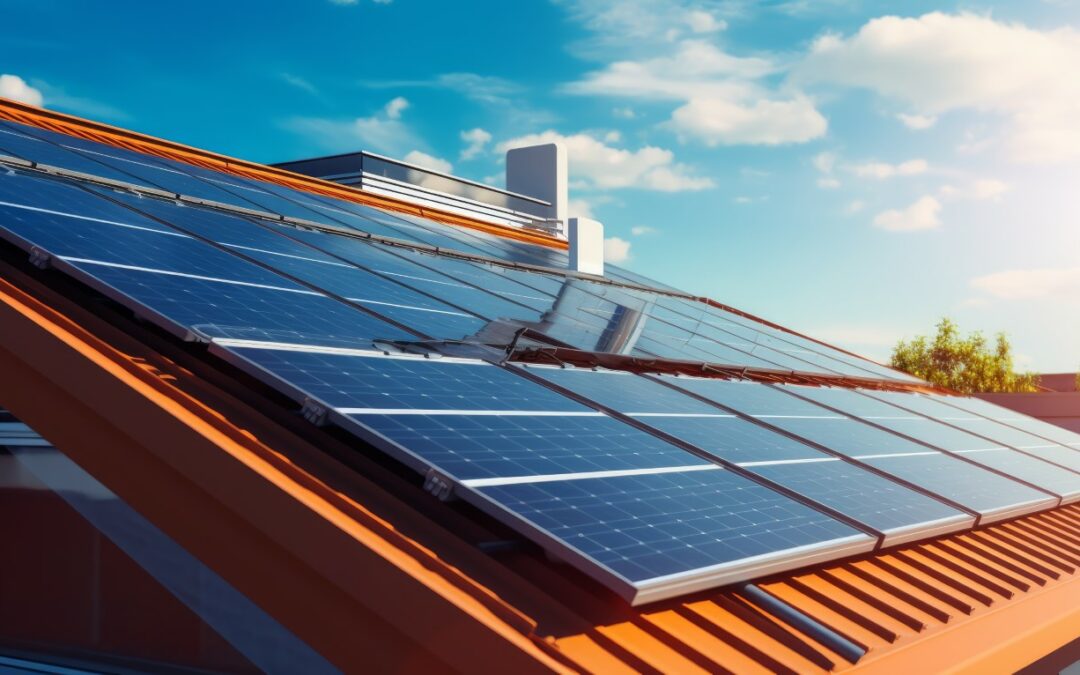Are you looking to make a difference in your home while also reducing your carbon footprint? Look no further! We’ve got the ultimate guide on choosing eco-friendly roofing materials.
By making this simple change, you can contribute to a more sustainable future for our planet.
In this article, we’ll explore the benefits of eco-friendly roofing, discuss different types of sustainable materials, and provide installation tips.
Join us as we embark on this journey towards a greener home.
Key Takeaways
- Eco-friendly roofing materials have a positive environmental impact and are made from sustainable materials.
- Consider factors such as cost, durability, energy efficiency, and insulation properties when choosing eco-friendly roofing.
- The cost and maintenance of environmentally friendly roofing should be taken into account, but there can be significant long-term savings.
- Eco-friendly roofing offers long-term durability benefits, reducing the need for frequent repairs and replacements.
Benefits of Eco-Friendly Roofing
There are several key benefits to choosing eco-friendly roofing materials.
One of the main advantages is the positive environmental impact they have. Eco-friendly roofing materials are made from sustainable materials that are harvested or produced in a way that minimizes harm to the environment. These materials are often recyclable or biodegradable, reducing waste and allowing for a greener construction process.
By choosing eco-friendly roofing materials, you can help reduce the amount of energy needed to heat and cool your home, leading to lower energy bills and a smaller carbon footprint.
Additionally, these materials are often more durable and require less maintenance, saving you time and money in the long run.
Types of Sustainable Roofing Materials
Now let’s explore the different types of sustainable roofing materials that are available.
When it comes to sustainable roofing options, there are several eco-friendly roofing trends to consider.
One popular choice is metal roofing. Metal roofs aren’t only durable and long-lasting, but they’re also recyclable at the end of their lifespan.
Another option is clay or concrete tiles. These materials are made from natural resources and can be recycled as well.
Additionally, wood shingles or shakes are a sustainable choice, as they’re made from renewable resources.
Lastly, there are also eco-friendly options like rubber, slate, and even living roofs, which incorporate vegetation to provide insulation and reduce stormwater runoff.
With these sustainable roofing materials, you can’t only reduce your environmental impact but also enhance the aesthetic appeal of your home.
Factors to Consider When Choosing Eco-Friendly Roofing
When choosing eco-friendly roofing materials, there are a few important factors to consider.
First, cost and durability play a significant role in the decision-making process. It’s important to find a material that isn’t only environmentally friendly but also fits within your budget and will last for a long time.
Additionally, the energy efficiency rating of the roofing material is crucial in reducing energy consumption and minimizing environmental impact.
Cost and Durability
Considering the cost and durability of eco-friendly roofing materials is essential for making an informed decision.
When evaluating the cost-effectiveness of these materials, it’s important to consider both the initial installation cost and the long-term savings. While eco-friendly roofing materials may have a higher upfront cost, they often provide significant energy savings over time, resulting in lower utility bills.
Additionally, these materials are designed to be durable and long-lasting, reducing the need for frequent repairs or replacements. This not only saves money in the long run but also minimizes the environmental impact associated with the production and disposal of traditional roofing materials.
Energy Efficiency Rating
To determine the energy efficiency rating of eco-friendly roofing materials, we evaluate various factors.
One important factor to consider is the insulation properties of the material. A well-insulated roof can help reduce heat transfer, keeping the interior of the building cooler in the summer and warmer in the winter.
Another factor to consider is the material’s solar reflectance. Roofing materials with high solar reflectance can reflect sunlight and reduce the amount of heat absorbed into the building, resulting in lower energy consumption for cooling.
Additionally, the environmental impact of the production and disposal of the roofing material should be taken into account. Choosing materials that are made from recycled or sustainable materials can contribute to a more eco-friendly roofing solution with a positive energy efficiency rating.
Cost and Maintenance of Environmentally Friendly Roofing
When considering eco-friendly roofing materials, it’s important to take into account the cost and maintenance involved.
Affordable options such as recycled shingles or metal roofs can provide long-term durability benefits, making them a wise investment.
Affordability of Eco-Roofs
We found that the cost and maintenance of environmentally friendly roofing, known as eco-roofs, can vary based on factors such as materials, size, and installation method. When considering affordability, it’s important to take into account both the upfront installation costs and the long-term maintenance expenses.
While eco-roofs may have a higher initial cost compared to traditional roofing materials, they can provide significant savings in the long run. This is because eco-roofs are designed to be durable and energy-efficient, reducing the need for repairs and lowering energy bills.
Additionally, some eco-roofs may be eligible for tax credits or incentives, further offsetting the installation costs. It’s recommended to consult with a professional roofing contractor to assess your specific needs and budget to determine the most affordable eco-roofing option for you.
Long-Term Durability Benefits
As we delve into the topic of long-term durability benefits, let’s explore the advantages of choosing environmentally friendly roofing materials.
When it comes to long-term sustainability, eco-friendly roofs offer significant benefits. These materials are designed to withstand harsh weather conditions and have a longer lifespan compared to traditional roofing options. By choosing environmentally friendly roofing, you can reduce the need for frequent repairs and replacements, saving you money in the long run.
Additionally, eco-roofs have a lower environmental impact as they’re made from recycled or renewable materials. They’re also designed to be energy-efficient, reducing your carbon footprint and lowering your energy bills.
Investing in an eco-friendly roof not only ensures long-term durability but also contributes to a greener and more sustainable future.
How to Install Eco-Friendly Roofing Materials
To properly install eco-friendly roofing materials, it’s important to carefully follow the manufacturer’s instructions and use the appropriate tools and materials. Here are some eco-friendly roofing installation tips and steps for installing sustainable roofing materials.
First, make sure to prepare the roof surface by cleaning it thoroughly and repairing any damage.
Next, lay down a waterproof underlayment to provide an extra layer of protection.
Then, carefully install the eco-friendly roofing materials according to the manufacturer’s guidelines, ensuring they’re securely fastened.
When working with eco-friendly roofing materials, it’s crucial to handle them with care and take necessary safety precautions. Always wear protective gear, such as gloves and goggles, and work in a well-ventilated area.
By following these steps, you can ensure that your eco-friendly roofing materials are installed correctly, providing long-lasting protection for your home while minimizing environmental impact.
Now let’s explore some exciting eco-friendly roofing trends and innovations.
Eco-Friendly Roofing Trends and Innovations
The latest eco-friendly roofing trends and innovations offer homeowners sustainable options that enhance energy efficiency and reduce environmental impact.
Eco-friendly roof design has evolved to include various materials and techniques that prioritize sustainability.
One popular trend is the use of green roofs, which involve the installation of vegetation on the roof surface. This not only provides insulation and improves air quality, but also helps to mitigate stormwater runoff.
Another innovation is the development of solar roofs, which integrate solar panels into the roof structure to harness renewable energy.
Sustainable roof construction techniques have also emerged, such as the use of recycled and reclaimed materials, as well as the implementation of advanced insulation systems.
These innovations demonstrate the industry’s commitment to creating environmentally responsible roofing solutions for homeowners who desire to reduce their carbon footprint.
Conclusion
In conclusion, choosing eco-friendly roofing materials not only benefits the environment, but also your wallet. By considering factors such as durability, energy efficiency, and recyclability, you can make a sustainable choice that will last for years to come.
From innovative options like solar panel roofs to traditional choices like clay tiles, there are numerous trends and innovations to explore. So why not join the green revolution and make a positive impact on the world, one roof at a time?

